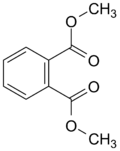Thanks. I looked at some, and found out some more information. According to www.illawarrasurf.com/msds/mekp.pdf the peroxide hardener is incompatible with "strong acids, strong alkalis, reducing agents"
For Crompton Hi Point 90, (www.tapplastics.com/uploads/pdf/MSDS_TAP_MEKPC.pdf) it says "avoid contamination with any foreign substance" and "Incompatible materials Strong
acids, Reducing agents, accelerators. Promoters. Other reactive chemicals."
Easy composites MSDS (https://www.easycomposites.co.uk/downloads/MSDS/EC-MSDS-MEKP...) "Do not mix with accelerators, reducing agents, strong alkalis, andheavy metal
compounds..." The product must never be stored together with accelerators such as driers, heavy metal compounds etc. Avoid contact with rust..." Use
clean equipment an tools of inert material such as stainless steel, polyethylene, polypropylene, glass."
"Incompatible materials such as acids, strong bases, tert amines, friedel-crafts catalysts, heavy metals, cobalt accelerators or other peroxice
accelerators or promoters, rust, brass, galvanized steel, acetone, reducing or oxidizing agents, grinding dust, and dirt."
Arkema: https://www.arkema.com/export/shared/.content/media/download... "keep away from incompatible materials such as: Strong oxidizing agents, powerful
reducers, acids, bases, amines, transition metal salts, sulfur compounds, rust, ash, dusts (risk of self-accelerating exothermic decomposition)..."
Norox MEKP-925 www.advanced-plastics.com/Docs/MSDS/M29_141218%20SDS.pdf "keep/store away from clothing,/strong acids, bases, heavy metal salts and other reducing
substances/combustible materials..." "keep away from strong acids, bases, heavy metals, salts, reduing agents and accelerators. Contaminants (e.g.
rust, dust, ash). Combustible materials, Risk of decomposition. Dimethylaniline, Cobalt Napthenate and other promoters, accelerators, reducing agents,
or any hot material."
http://www.tuffstuff.co.uk/application/files/7914/4957/5131/... "keep away from reducing agents, e.g. amines, acids, alkali, heavy metal compounds
(e.g. accelerators, dryers, metal soaps)." "Violent reactions may be expected with acid, alkali, heavy metals and reducing agents. Avoid contact with
rust."
"Use only stainless steel 31.6. PVC, Polythene or glass-lined equipment"
Regarding smokeless powder, I could only find http://ceemjournal.org/upload/pdf/ceem-15-055.pdf "A case of severe corrosive gastritis and liver necrosis caused by ingestion of methyl ethyl
ketone peroxide" by Jung Oh Chang et. al This is mainly about an emergency medical case in which someone accidentally drank MEKP resin hardener
(stored in an unlabled water bottle) and died. However, it does say that "It is used as a general industrial solvent in the manufacturing of
nitrocellulose coating, vinyl film, and smokeless powder."
However, I get this feeling that when talking about "a general industrial solvent" they might be confusing MEKP with un peroxided methyl ethyl ketone.
Some of the material safety data sheets did not mention metals, or only mentioned their compounds. But since some cautioned against transition metals
in general (as opposed to just their salts), and one mentioned brass specifically, I think the safest assumption (to the extent that making and
storing organic peroxide compounds can be called safe) would be to consider MEKP incompatible with brass.
Whether it is compatible with smokeless powder, however, remains unclear to me.
[Edited on 25-1-2019 by C6(NO2)5CH2CH(CH3)N(NO2)2] |







 Dimethyl phthalate:
Dimethyl phthalate:





















